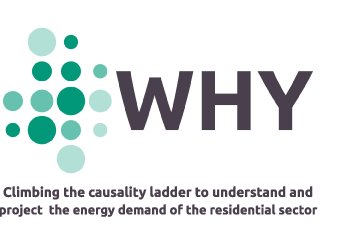Deliverable 1.3 Use Case Definition
This deliverable includes the definition of the five Use Cases of the WHY project, which capture a wide diversity of contexts from the micro-grid to energy community, national, European, and global level. These Use Cases play a central role in the project, as through their application in diverse situations, the WHY Toolkit and models will be tested and validated. This deliverable aims to provide detailed definition and design for the Use Cases, which will be then operationalized and carried out in WP5 using the WHY Toolkit and Energy System Models (ESMs). In this way, the impacts of WHY modelling enhancements on energy and climate strategies at different jurisdiction levels, from the micro-grid and energy communities to the European and global levels.
The design of all Use Cases has been greatly benefited from the active engagement of stakeholders and end-users, including policy makers, public authorities, and utilities. This has taken various forms, depending on the specificities of each Use Case ranging from the organisation of (online and in-person) workshop to interviews, focus groups on online questionnaires. In all cases, stakeholders helped to define the most important aspects, questions, and policy-relevant insights to be assessed in each Use Case of WHY. An active communication channel with stakeholders has been established and will be extensively used to discuss the results of the Use Cases and identify policy-relevant recommendations.
Various aspects were considered in the definition of each Use Case, including:
a) the types of potential interventions to be assessed (with the support of relevant stakeholders);
b) the external policy and regulatory framework at different jurisdiction levels, including both those already legislated and implemented as well as possible future policies and strategies targeting EE improvements, fostering DR actions, or the electrification of services,
c) the load profiles to be generated and integrated in the different use cases including the number and characteristics of different residential loads and their temporal and spatial scale,
d) The development of the external and internal variables (or aspects) that affect energy consumption (weather, energy prices, energy taxes, socioeconomic developments, incomes, behavior, cultural, grid access, etc.), based on the latest available official or scientific sources,
e) The Sustainability Assessment Model, based on a collection of the most relevant KPIs in each Use Case to measure the technical, economic, environmental, and social sustainability.
The study also includes the relevant information needed for the implementation of the scenarios and policy interventions with the WHY Toolkit and the links with large-scale ESMs (PRIMES, TIAM-ECN, PROMETHEUS), focusing on the European and global Use Cases where the use of ESMs was identified as important.
The deliverable serves as a starting point and as a basis for the analysis in WP5, providing key input assumptions, policy framework, definitions, policy interventions, and KPIs to be used for the actual development of the five Use Cases through scenario implementation, simulations, and policy impact assessment using the WHY Toolkit.




